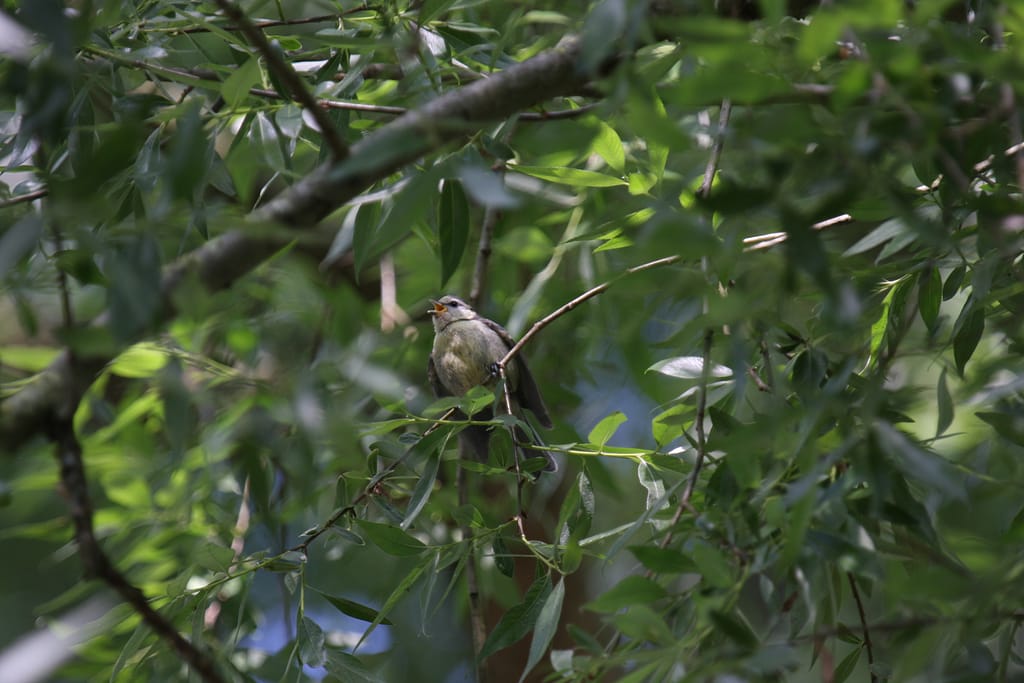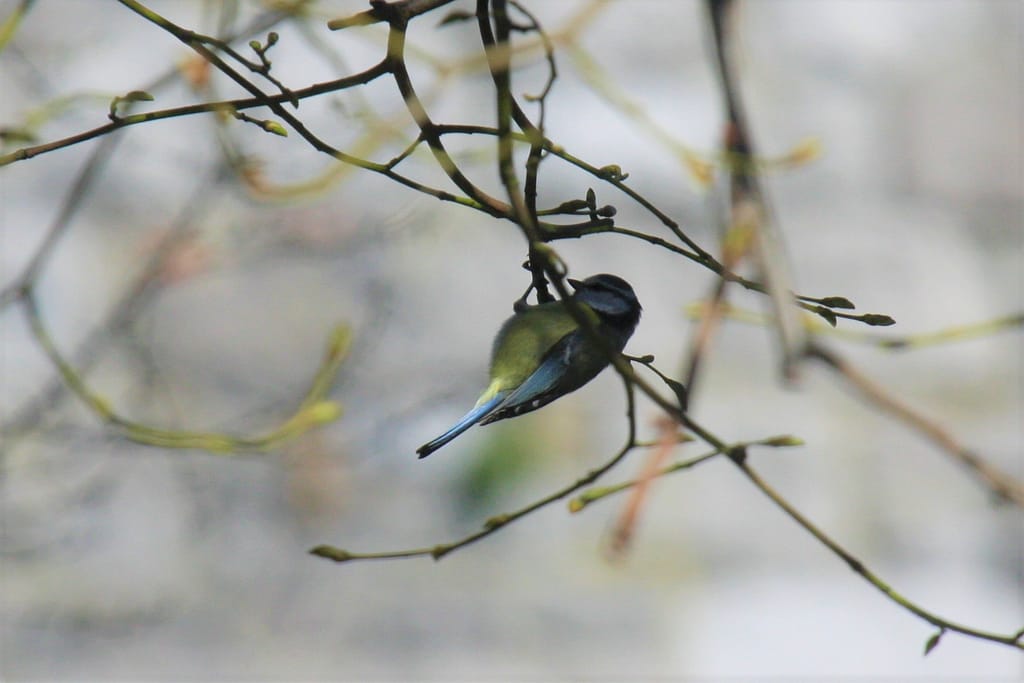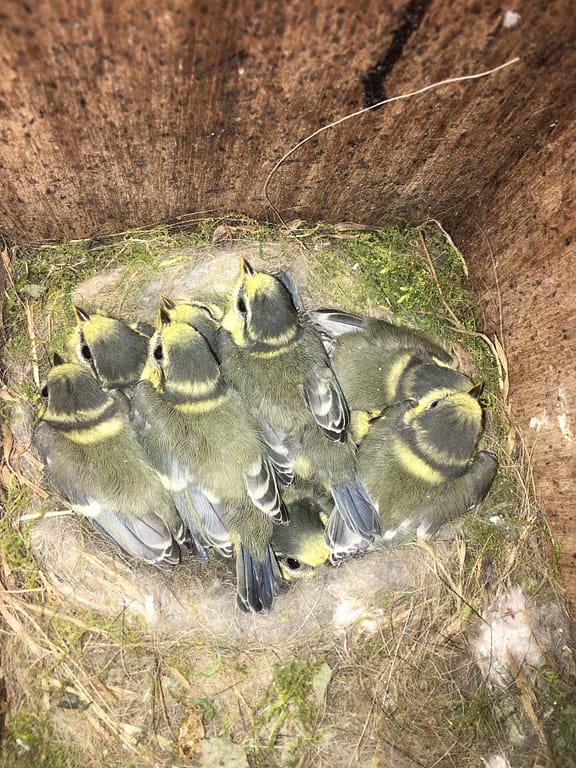Originally, blue tits are forest dwellers, but they also manage very well in the city. Just like the great tit, you will find the blue tit in almost every Dutch garden as well as in parks, and, therefore, also within the grounds of Tapijn. Great and blue tits both use nest boxes. In the future, we hope to be able to show images of the lives of blue tits in the nest boxes we have placed around Tapijn.
Latin name:
Cyanistes caeruleus
Characteristics:
Whereas the great tit is predominantly black and yellow, the blue tit is – as its name suggests – predominantly blue and yellow. Blue tits have a characteristic yellow cap, a yellow breast, black eye stripes, and a grey-blue chin spot. Males often have a slightly more intense blue colour than females and juveniles. Apart from that, it is not easy to distinguish between male and female blue tits on the basis of appearance.
The blue tit has considerably less aptitude for singing than the great tit. There is hardly any variation in the singing of the blue tit. Its song is high-pitched, often with a vibrato at the end. Male blue tits sing to define territorial boundaries and attract females. Research has shown that blue tit females also sing regularly. They do so to warn their partner of imminent danger.
Breeding data:
Like great tits, blue tits start defending a territory and forming a partner bond in February and March. Couples can stay together for several years, but that is certainly not always the case. The male shows the female different nesting options (cavities) within his territory and she eventually chooses where to lay her eggs. Moss or dry twigs are used to build the basis of the nest and then soft material is used to ‘decorate’ the nest. This material varies; the blue tit also uses whatever it can find – horsehair, badger hair, dog hair, wool, feathers, tennis ball fibres, you can find everything in its nest. Blue tit nests generally contain more feathers as decoration than great tit nests. In the nest, 8 to 12 eggs are laid (one every day) and the female only starts brooding when the clutch is complete. After 10 to 12 days of brooding, the eggs hatch, and the chicks are fed by both parents for about 20 days. After the chicks leave the nest, the parents feed their young for one to two weeks.
Diet:
Blue tits feed mainly on insects, beechnuts, and other seeds. During the breeding season, caterpillars make up the majority of the young tits’ diet. But they are also fed mosquitoes and flies. In winter, tits mainly eat seeds and beech nuts. If you have not yet put any food out for birds in your garden, then try putting some of these out. Chances are you will find blue tits on your suet ball or bird feeder!



